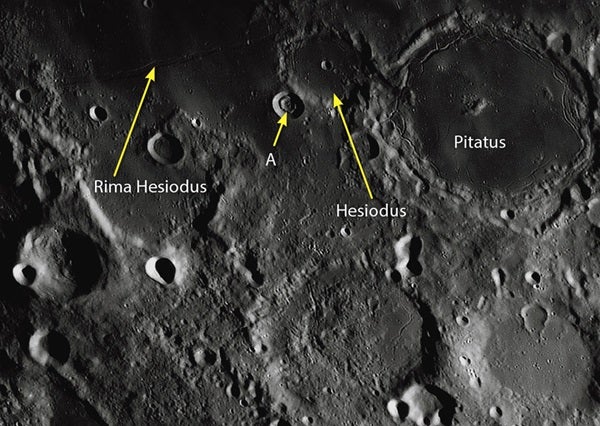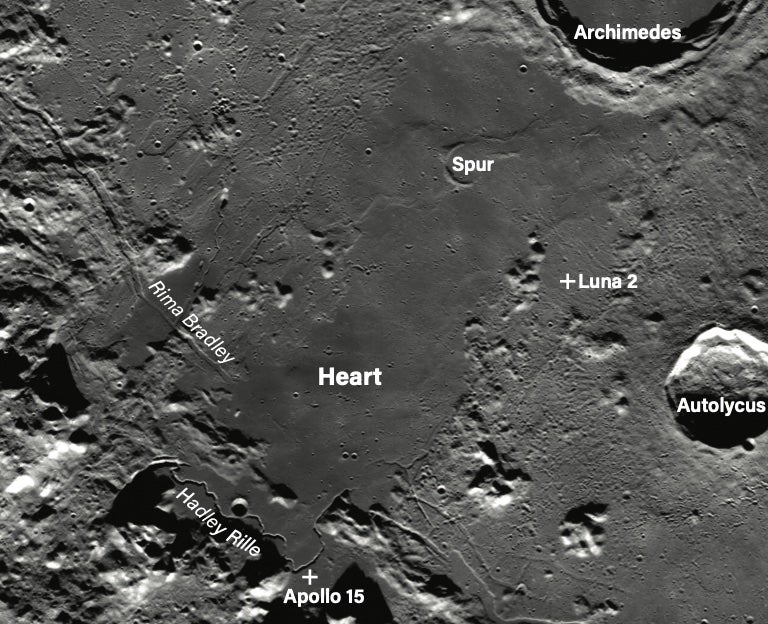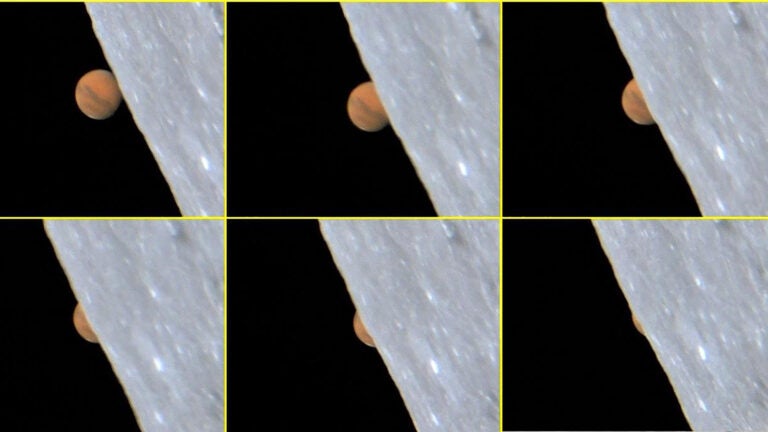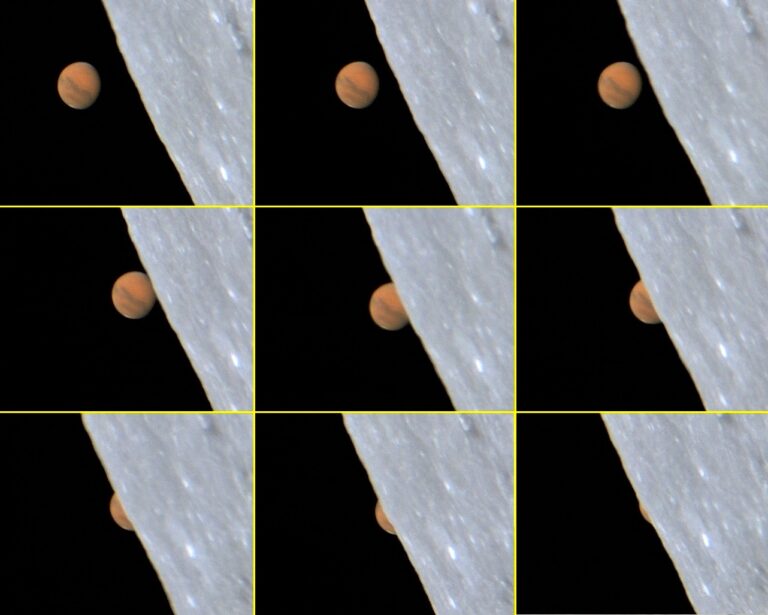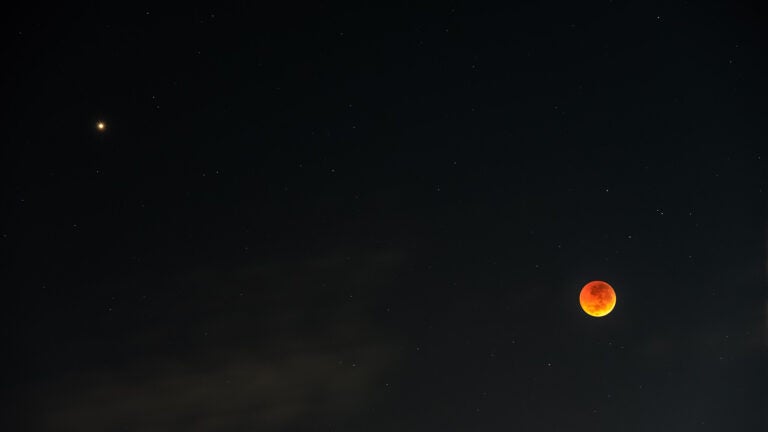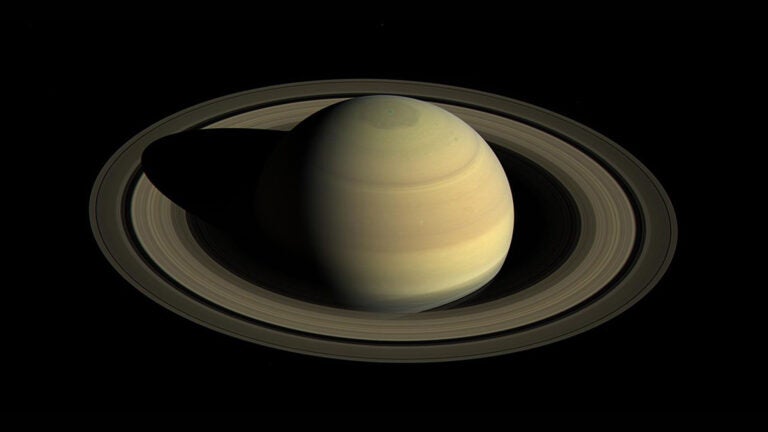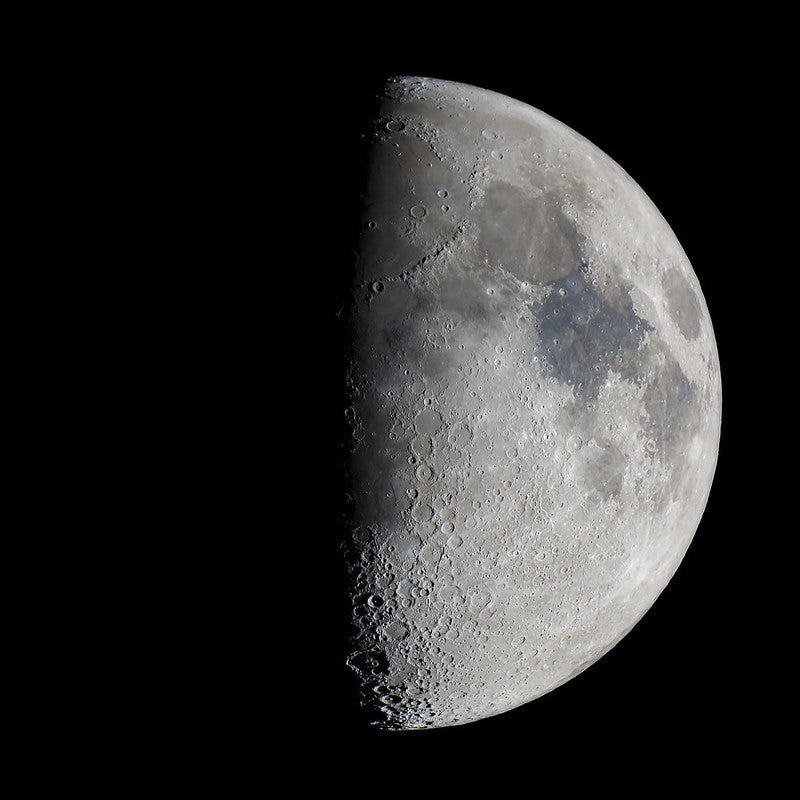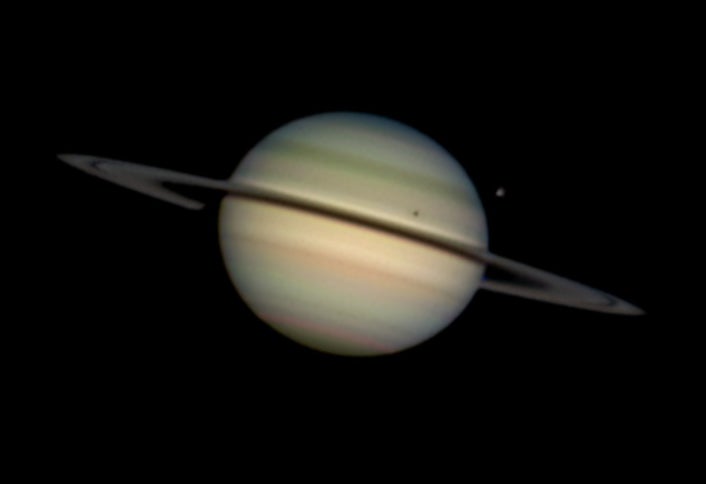Grasping
the graben
Unlike the Straight Wall, which is an individual fault, Rima Hesiodus is a geologic feature known as a graben, where a block of land has subsided between two normal faults; Africa’s Great Rift Valley and Valles Marineris on Mars are fine examples of grabens linked to volcanic processes.
The Hesiodus Rille appears to originate near the crater Hesiodus (a small lava-flooded plain in southern Mare Nubium). It stretches southwest across that sea, slicing through a patch of rugged ridge of lunar highland, before it ends north of Capuanus Crater in Palus Epidemiarum (the Marsh of Epidemics). You’ll see it best through small telescopes nine or 10 days after New Moon.
darkness
On the evening of February 17, 2016, I observed the Hesiodus Rille through my 31/3-inch refractor at 150x. At a glance, it appeared merely as a fine thread of darkness (like a cat’s whisker), hardly noticeable against the lunar sea. The rille was darkest near the terminator, where it appeared to emerge from a tadpole-shaped patch of lunar highland northwest of Weiss Crater’s broken wall. The remainder of the rille was more of a visual whisper, especially near the northern flanks of the ejecta blanket surrounding Hesiodus.
The rille all but vanished at lower magnifications because the brightness of the surrounding landscape created too much glare to see it comfortably. With time, I could make out a bright “negative” flow of light paralleling the rille’s shadow to the north, which flowed along its full length, making the rille appear out of focus.
On the following night, Palus Epidemiarum emerged from the terminator, allowing a view of the rille’s full length. However, the segment in Palus Epidemiarum (being closest to the terminator) was now the darkest and most prominent section. The remainder of the graben appeared broader and fainter with the two parallel faults running across Mare Nubium like a set of ghostly train tracks.
More to ponder
Just west of Hesiodus is a rare double crater, Hesiodus A, created most likely by twin asteroid impacts. The craters are concentric, and I’ve spied them through a 3-inch scope with an eyepiece that yielded a magnification of 150x.
Hesiodus has long been considered a fascinating feature. In an 1899 volume of Memoirs of the British Astronomical Association, the Lunar Section reports that on May 14, 1894, Captain Molesworth made a “beautiful drawing” of Hesiodus that shows the “well-known central crater [Hesiodus D] missed by Madler, which is very strange unless it has become more conspicuous since.” It may be worth keeping your eye on this curious feature.
As always, send your lunar imaginings to sjomeara31@gmail.com.


